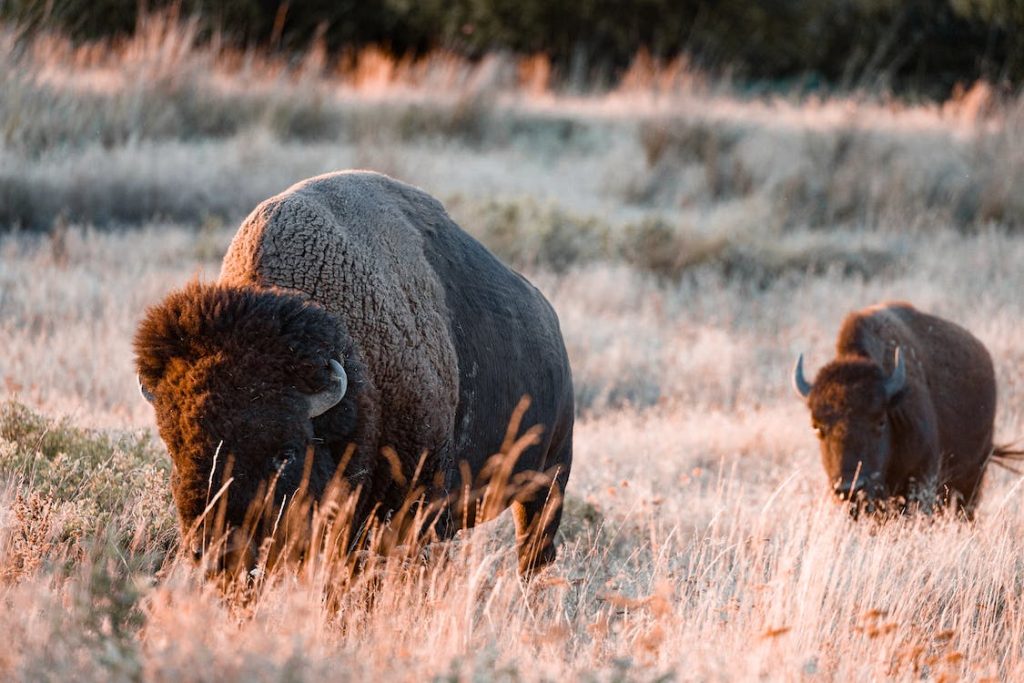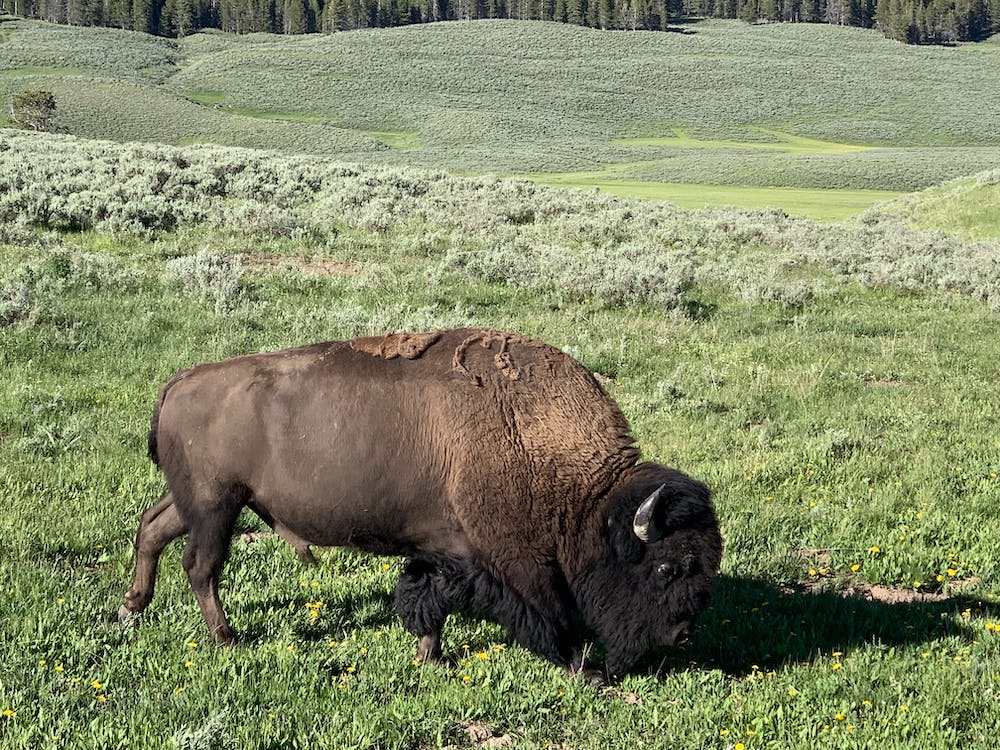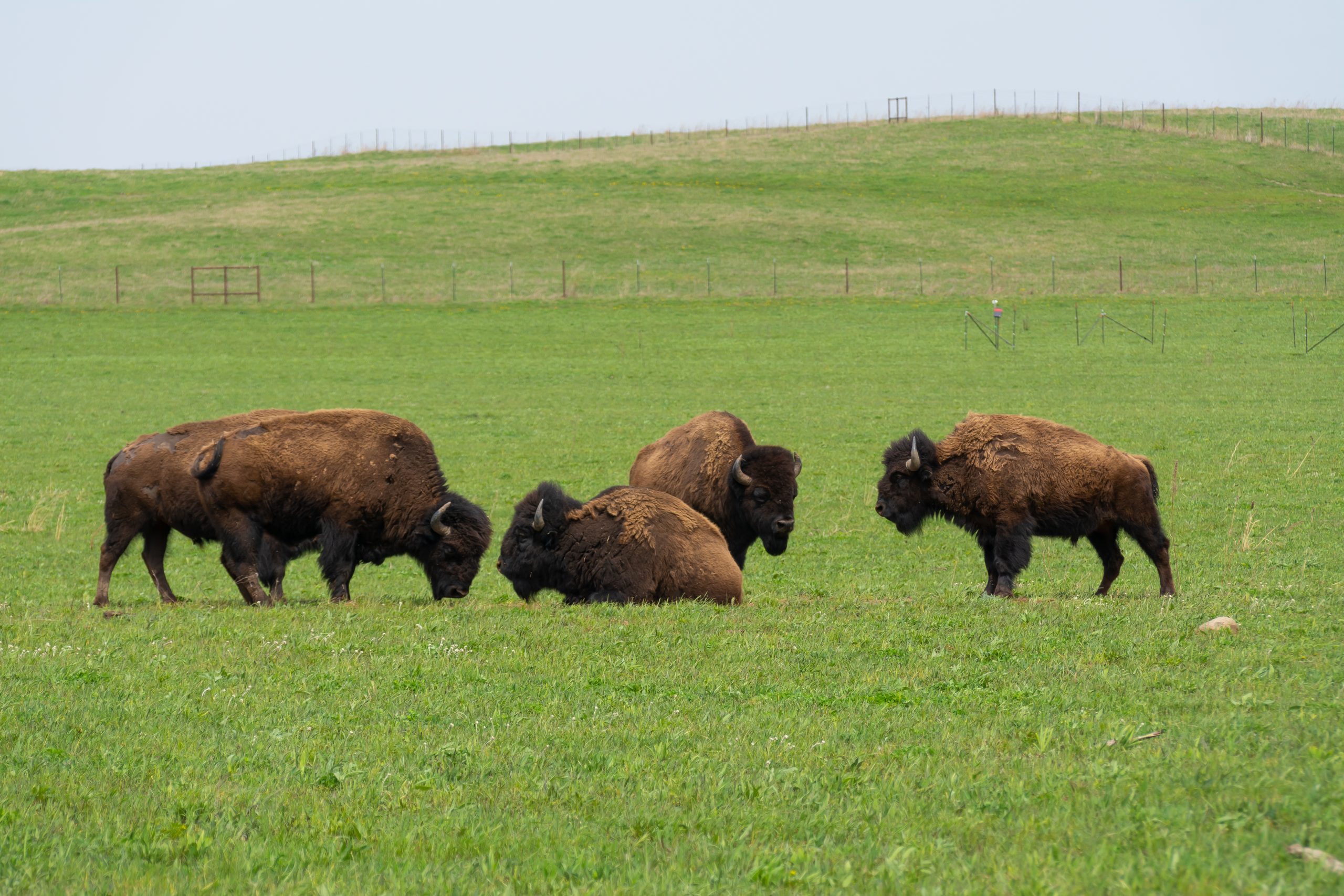Bison once roared some 30 million strong in the Great Plains region and also in Illinois. As the continent’s largest land mammal, bison were crucial in shaping the prairie ecosystem. However, bison nearly vanished in the late 1800s. In Illinois, overhunting and habitat destruction eliminated the bison population, with the last recorded bison being killed in 1837 near Troy Grove. By 1900, most of Illinois’ prairies had been converted to crop agriculture.
Bison have made a triumphant return to the Prairie State in two locations west of Chicago. One location involved the Bison Reintroduction Experiment. The Midewin National Tallgrass Prairie, located 60 miles southwest of Chicago near Wilmington, once housed the former Joliet Army Ammunition Plant. In 1996, the Department of Defense transferred over 19,000 acres to the U.S. Forest Service. The Forest Service, community partners and volunteers have been actively restoring Midewin from industrial and agriculture lands to native tallgrass prairie. Over 13,000 acres of the land are now open to the public.
The Forest Service introduced 23 cows and four bulls to Midewin in 2015. The herd will be allowed to grow to a maximum of 100 animals. The bulls came from Colorado and the cows were from South Dakota. The Bison Reintroduction Experiment will help determine if bison grazing patterns benefit the tallgrass prairie ecosystem and grassland bird habitat. Success will be measured through monitoring of grassland bird populations, native grass and flowering plant populations and visitor-bison interactions. The experiment is intended to measure how bison can help restore a portion of land to tallgrass prairie. Visitors are welcome at Midewin and can traverse the trails at the site while observing bison on the large pastures with rolling hills.


Bison have also been reintroduced to Illinois’ Nachusa Grasslands in Franklin Grove, about two hours west of Chicago. The Illinois Nature Conservancy purchased the land, which contained corn and soybean fields, in 1986 Nachusa Grasslands | The Nature Conservancy in Illinois. More than 4,000 acres have now been protected through acquisition or conservation easements. The group’s goal was to restore the rolling hills to the way they looked 200 years ago or more. This restored and remnant prairie is now home to 180 species of birds, more than 700 native plant species and a herd of bison that came from South Dakota and other preserves.
Visitors to the property can enjoy hiking, birdwatching and viewing bison herds. Bison returned to Nachusa in October 2014, and they are able to road across 1,500 acres of rolling land and are not always visible to visitors. The goal is to have the initial herd of 50 bison grow to 125. Bison are a very easy animal to maintain, as they don’t need a barn and don’t need to be fed. Volunteers have donated more than 200,000 hours of labor to the restoration and management of this prairie grassland.
Although some progress has been made, the bison’s recovery has been slow and is far from complete in the U.S. Hundreds of thousands of bison remain in North America today, with most being raised for commercial uses in herds on small acreages behind fences. Less than 10 percent of existing bison are managed for conservation or as a wild species, and thousands of bison on large landscapes are needed to fulfill their former ecological role.
” Preserving conservation in Illinois benefits wildlife and expands natures beauty,” said Rep. Rosenthal. ” It’s exciting to see Bison in Illinois again and able to graze on the prairies as they adopt to their home.”
–USDA Announces Historic Investment in Wildlife Conservation–
Read the article: reprosenthal.com/2023/07/20/usda-announces-historic-investment-in-wildlife-conservation/
